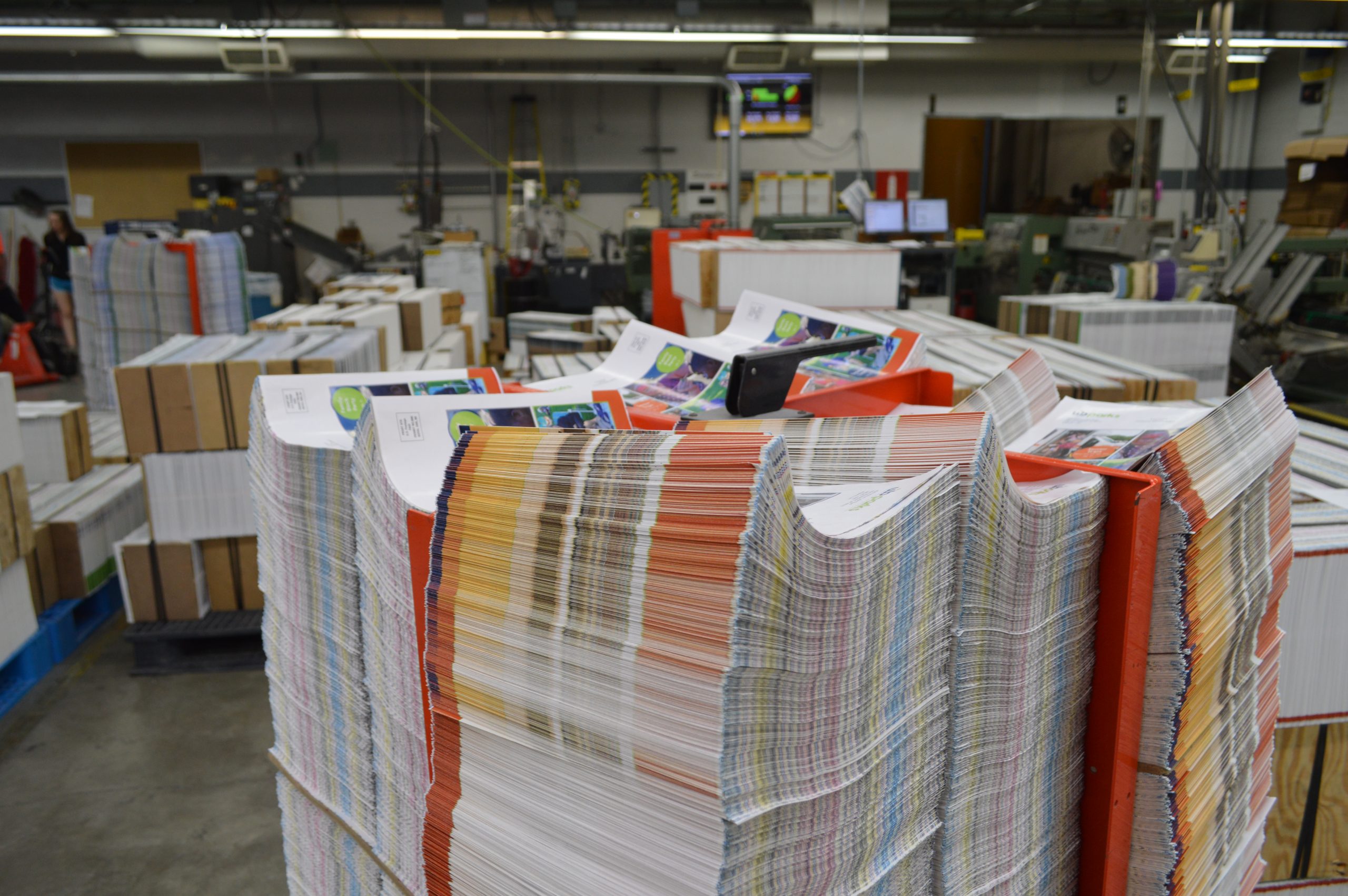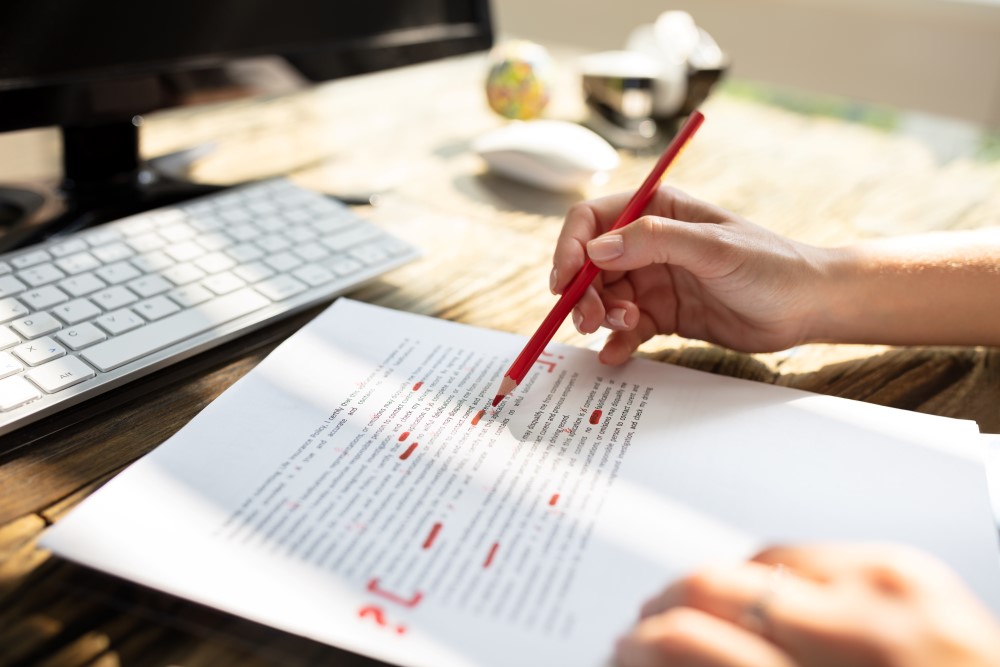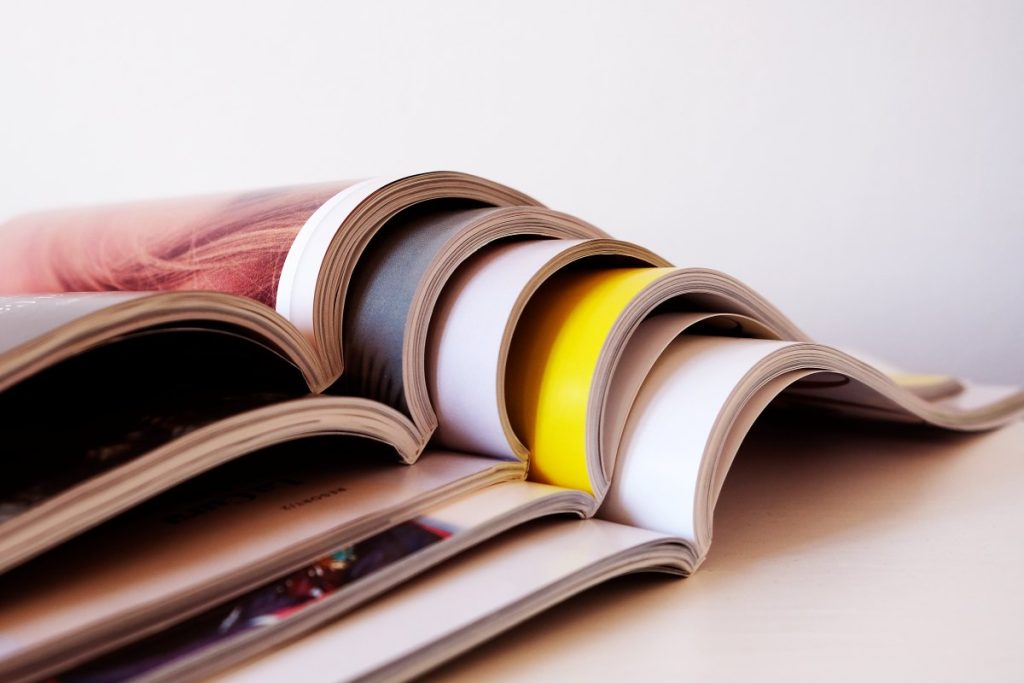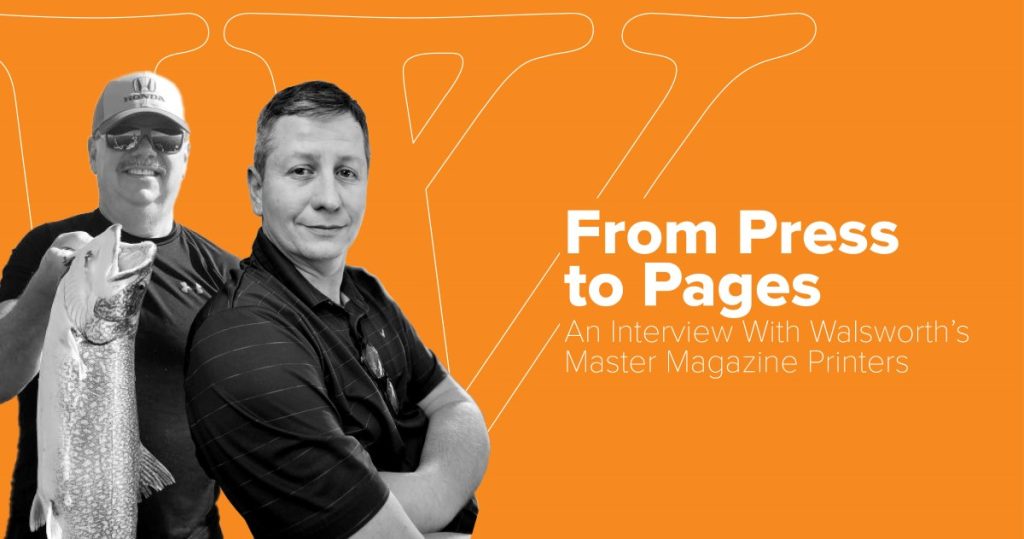

Anyone who’s gone through the process of creating and distributing a magazine will tell you that it’s hard work. Creating a magazine involves a lot of moving parts – having a foolproof plan in place will help ensure that the only ‘issues’ you have are the first issues of your brand-new magazine!
Creating a Magazine From Start to Finish
The process of creating a magazine will be faster and easier if you have a talented team by your side. However, building a magazine from the ground up by yourself is certainly possible, but it will require you to wear many hats.
It can take months to create your first magazine, especially when you’re taking the time to properly lay out and proof your product. If you try and rush the process, the quality of your magazine may suffer.
Planning

The planning stage is where you’ll set your magazine up for success. Proper planning is crucial to the execution of any publication – you’ll be hard-pressed to find any successful magazine that isn’t the result of many hours of careful planning.
During the planning stage, you’ll need to make key decisions like choosing the title and concept for your magazine and also cover topics like your desired target audience, the balance between text and imagery, your sources for content, your marketing plan and the overall tone and voice of your magazine.
Will this be a recurring publication? If so, how often will you publish? What’s the main goal behind your magazine? Once you’ve answered these questions, it’s time to begin planning the first issue of your magazine. Take the time and effort to plan unique, engaging content that aligns with the tone and purpose of your magazine. By the end of this stage, you should have content planned for each section of your first issue.
Creating Content
Remember: content doesn’t just mean the articles in your publication – it also encapsulates headlines, captions and photography. It takes multiple skill sets and lots of working hours to put together the content needed to create a magazine. A skilled editorial team will make it easier to handle all writing, editing and photography needs, but it’s certainly possible to do it yourself.
Depending on the type of magazine, this stage could involve in-depth research, conducting interviews and photography sessions. If you’re undertaking all content needs by yourself, we recommend having a very detailed plan and schedule before you write a single word or take any photographs. Once you have a plan, give yourself plenty of time to execute it – especially if this is your first publication.
Another option for creating content is hiring a freelancer. Platforms like Upwork and Fiverr make it easy to connect with freelance writers, designers and photographers. And speaking of photography, don’t forget about stock photos – while it will probably be harder to find the perfect photo for your magazine layout when choosing from a library of stock photo options, it could be a viable alternative if you don’t have access to a professional photographer. You can find stock photos on Adobe Stock, Shutterstock and iStock, to name a few.
Advertisements
This stage is also when you’ll want to start reaching out to other brands and companies to sell advertising space in your magazine. Most magazines use paid advertisements to secure funding – building, printing and distributing a magazine isn’t cheap, and selling ad space is a good way to recoup some of those costs.
If you’re starting from scratch, you’ll want to put together a media kit to send to potential advertisers. It should include information about your projected audience, content and theme, ultimately painting a picture of why these brands should advertise in your magazine.
Then, compile a list of brands in your space that you think would appeal to your target audience. For example, if you’re making a fashion magazine targeted towards women in high-income brackets, your list would likely include luxury clothing and accessory brands. Once you have a list of potential brands and you’ve decided on your ad rates, begin contacting the brands on your list and sending them your media kit, offering premium ad space in a brand-new magazine.
Proofreading and Editing

Proofreading is a crucial step in the editorial process that helps ensure your final product is clean, professional, and free of grammatical mistakes and misspellings. Even if you’re working with a team of expert writers, make sure not to skip this step of the process – it’s much easier to fix a mistake before it goes to print. Free tools like Grammarly can make the proofreading step much faster, and often even give recommendations to improve sentence structure and wording.
Design and Layout
Design is an important part of the process; this is where you’ll determine the visual appeal of your magazine. The trick is finding the right balance to make your magazine eye-catching while also being easy to read. Take the time to find the perfect font, and play around with the balance of images and text for a perfect layout on every page.
Your best bet for creating a magazine layout is a design program like Adobe InDesign. InDesign is full of intelligent design tools that make it easy to create and edit your layout, even if you don’t have years of experience as a designer. Just make sure to use print-friendly margin and bleed settings (⅛ inch) and export your files according to your printer’s specifications.
Work With a Professional
If you’re working by yourself, design is another part of the editorial process where you may be able to get help from professionals. Donning Company Publishers offers professional editorial and design services for teams and individuals looking to print books, magazines and other publications. Their award-winning design team will help ensure a top-notch magazine that matches your vision.
Prepress
The prepress process is when you’ll work with your printer to get everything ready for print. You’ll finalize details like binding, paper finish basis weight and pagination, and you’ll get the chance to proof and approve your magazine before the final step in the printing process begins.
On the technical side, the prepress process involves creating the printing plates used to print the cover and pages of your magazine. These plates are imaged according to your digital magazine layout and then used to transfer ink onto paper. Four separate plates are created to transfer each of the four colors used in the printing process; cyan, magenta, yellow and black. These four colors align to create essentially any color on the visible spectrum – the reader’s eye blends the colors together. If you want, look closely at a printed magazine, and on the edge between blank space and printed space, you can see the individual dots of ink. Pretty cool, isn’t it?

A lot goes into ensuring your project is ready for print. Luckily, if you’re working with a qualified printer, they’ll be happy to help ensure you’re set up for success. “Our teams do a great job,” says Kevin Werderhausen, General Manager of the Walsworth – Fulton printing facility. “We give out a manual to our customers with a how-to on developing and loading files, things to watch out for, and what not to do.”
Printing
Once everything has been thoroughly reviewed, it’s time to begin printing! The pages of your magazine are typically printed using a process called web printing, where the eight plates – four above and four below – transfer the ink (in the four colors) onto a huge roll of paper, or ‘web.’ The web of paper is pulled through each component of the printing press at a breakneck pace, receiving images in each of the four standard colors, before traveling through an oven which rapidly heats the paper, quickly drying the ink.
The paper is then cut and folded into groups of pages known as signatures. These signatures, plus your covers, are all sent to the bindery to be glued or stitched together. For more detailed information about this process, read our blog article about offset printing.
Distribution
Once your magazines are off the press, the work isn’t quite done; now the challenge is getting them to their destinations. Distribution requires a good understanding of shipping methods and postage classes, and it takes a lot of work to get everything sorted and delivered on time. However, you may be able to save time and money by using a printer who also handles distribution.
Don’t Skimp on a Qualified Printer
Imagine: after putting countless hours into your magazine, you receive a copy of the final product and it’s all wrong. The colors are off, the binding is shoddy and the paper tears when you turn the pages. Make sure you take the time to properly research printing options and choose a printer with a proven track record.
Don’t leave the craftsmanship of your magazine up to chance; partner with an expert printer who knows how to get the job done right.
Print Your Next Magazine with Walsworth
Walsworth has worked in the printing industry for over 80 years, and it’s easy to see our expertise when you work with us. Our experienced printers tackle every job with unparalleled attention to detail to ensure complete customer satisfaction. Plus, our customer service representatives help facilitate seamless communication at every step of the process. If you’re ready to see the Walsworth difference, get started by contacting us today!



